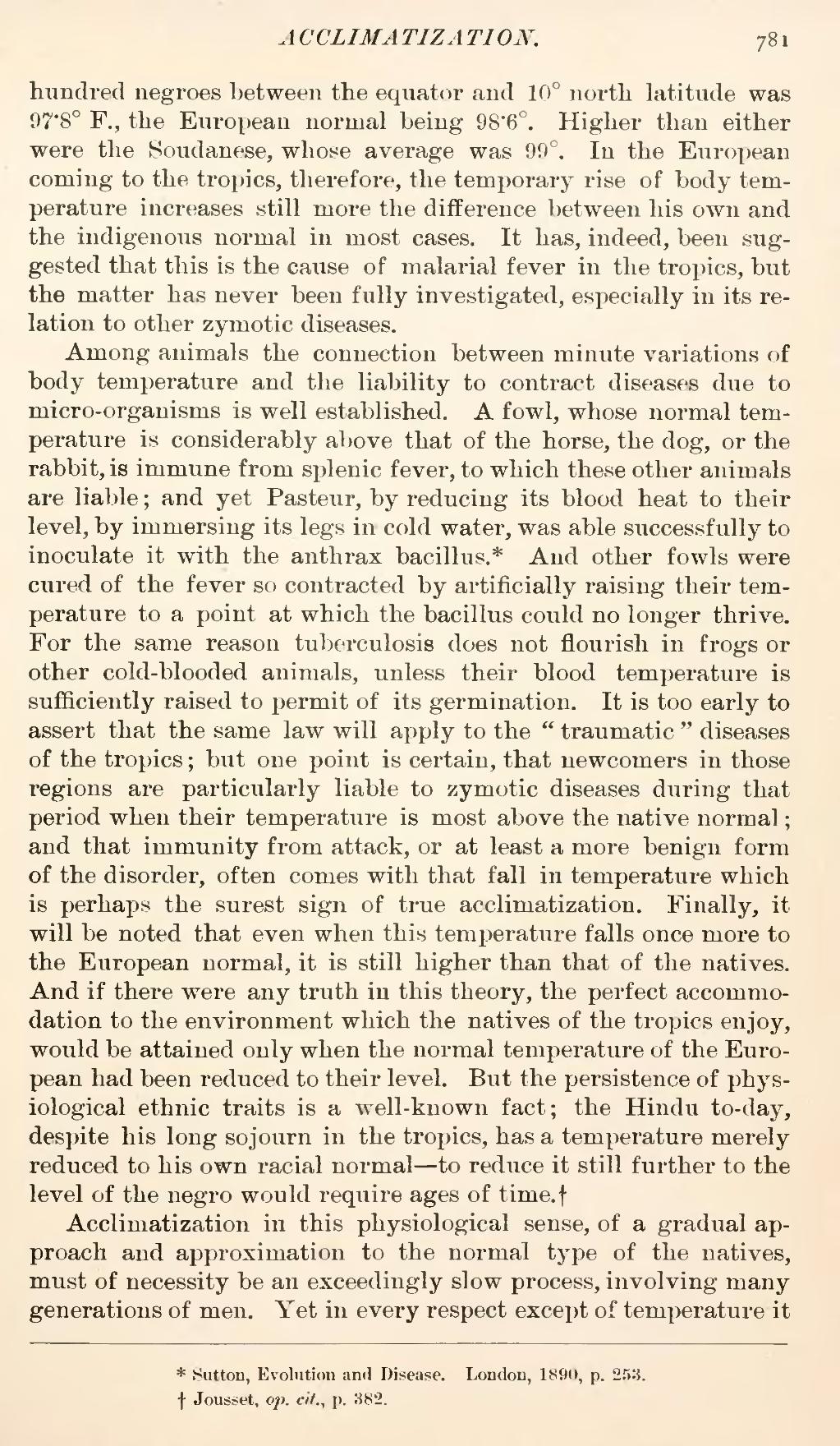hundred negroes between the equator and 10° north latitude was 97·8° F., the European normal being 98·6°. Higher than either were the Soudanese, whose average was 99°. In the European coming to the tropics, therefore, the temporary rise of body temperature increases still more the difference between his own and the indigenous normal in most cases. It has, indeed, been suggested that this is the cause of malarial fever in the tropics, but the matter has never been fully investigated, especially in its relation to other zymotic diseases.
Among animals the connection between minute variations of body temperature and the liability to contract diseases due to micro-organisms is well established. A fowl, whose normal temperature is considerably above that of the horse, the dog, or the rabbit, is immune from splenic fever, to which these other animals are liable; and yet Pasteur, by reducing its blood heat to their level, by immersing its legs in cold water, was able successfully to inoculate it with the anthrax bacillus.[1] And other fowls were cured of the fever so contracted by artificially raising their temperature to a point at which the bacillus could no longer thrive. For the same reason tuberculosis does not flourish in frogs or other cold-blooded animals, unless their blood temperature is sufficiently raised to permit of its germination. It is too early to assert that the same law will apply to the "traumatic" diseases of the tropics; but one point is certain, that newcomers in those regions are particularly liable to zymotic diseases during that period when their temperature is most above the native normal; and that immunity from attack, or at least a more benign form of the disorder, often comes with that fall in temperature which is perhaps the surest sign of true acclimatization. Finally, it will be noted that even when this temperature falls once more to the European normal, it is still higher than that of the natives. And if there were any truth in this theory, the perfect accommodation to the environment which the natives of the tropics enjoy, would be attained only when the normal temperature of the European had been reduced to their level. But the persistence of physiological ethnic traits is a well-known fact; the Hindu to-day, despite his long sojourn in the tropics, has a temperature merely reduced to his own racial normal—to reduce it still further to the level of the negro would require ages of time.[2]
Acclimatization in this physiological sense, of a gradual approach and approximation to the normal type of the natives, must of necessity be an exceedingly slow process, involving many generations of men. Yet in every respect except of temperature it
